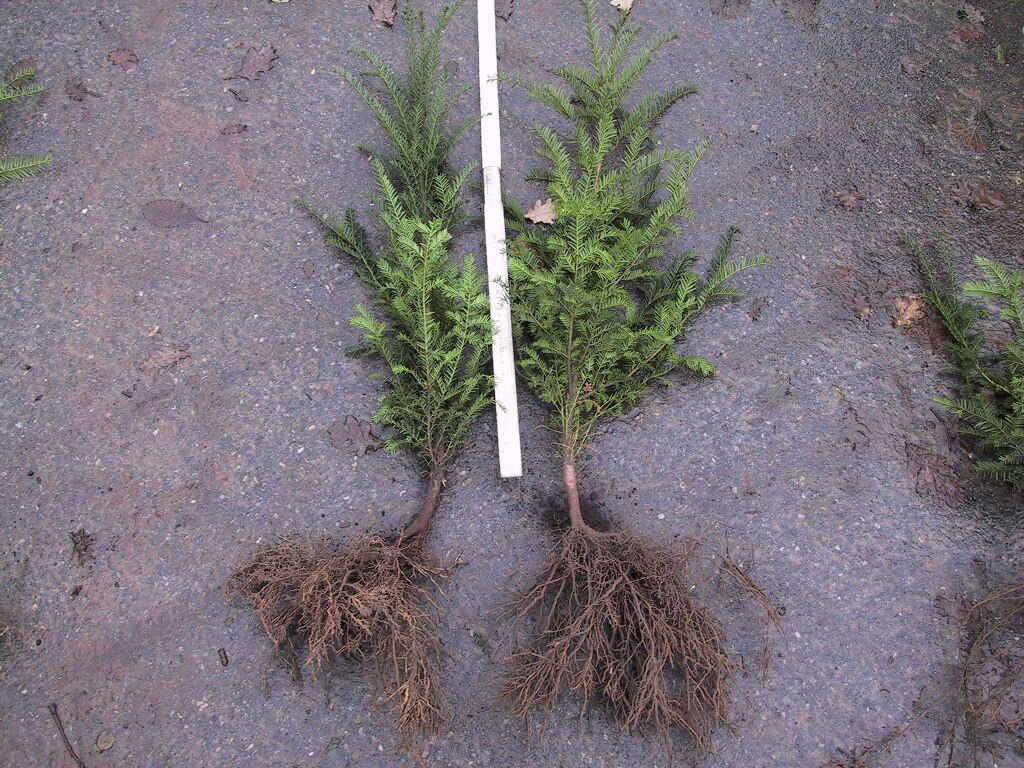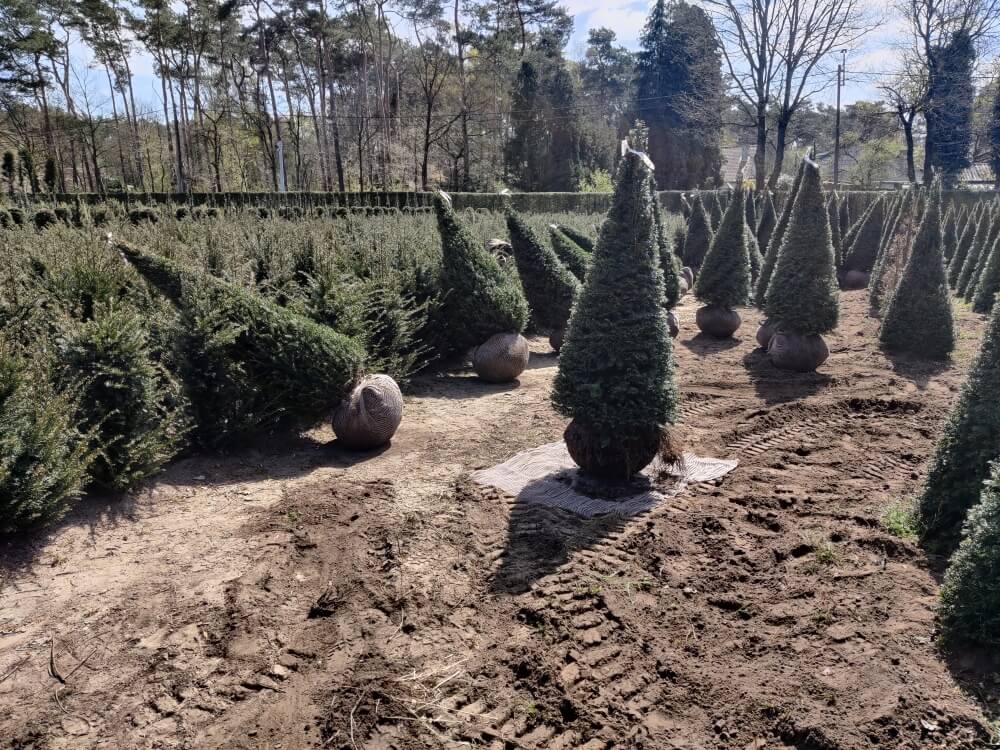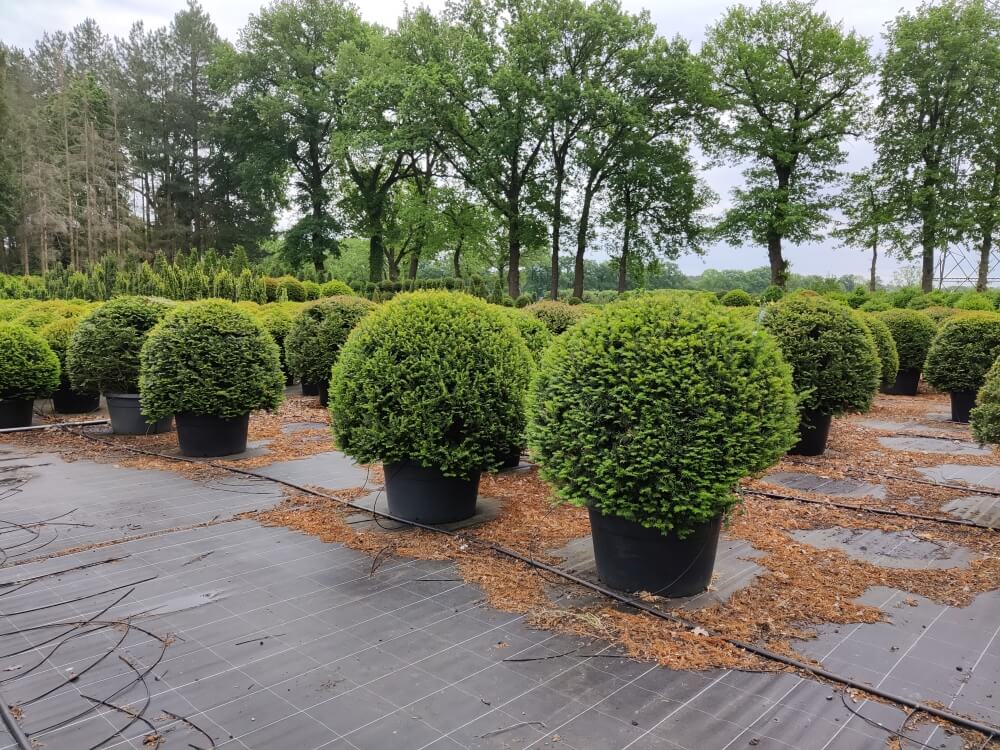Planting and soil preparation
Before planting, you should carry out proper tillage to obtain a good soil structure. Tilling the soil should be done in sufficiently dry weather conditions. Entering too wet soil can cause structural decay and not enough oxygen to reach the roots. Deeper digging of your plot will break up disturbing soil layers and allow the roots to grow sufficiently. After digging, it is best to increase the humus content of the soil by adding green compost or potting soil. On average, you will need 2 to 3 m3 per acre (100 m2), depending on the type of soil.
If the soil is too acid (low PH), it is best to add seaweed lime at a dose of 10 to 15 kg/are. Lime fertilisation improves the soil structure and the yew will grow better. Yew grows in both calcareous and somewhat more acidic soils. Yew does not like wet soils and high groundwater levels. Proper drainage or permeable soil is crucial.
Type of plant
The time of planting depends on the type of plant. Bare-root plants can be planted from October to the end of April, plants with a rootball from October to the end of May and plants in containers (grown in pots) can be planted throughout the season. However, you should pay attention to the following:

Bare root
The roots should never dry out. You should protect them at all times with foil (especially during transport) and plant or ensile them immediately. This ensiling is done by burying the entire bundle in the ground so that you can plant it later.

Kluit of draadkluit
De kluiten mogen niet uitdrogen en dienen eveneens beschermd te worden tegen slechte weersomstandigheden(afdekken of inkuilen). De gaaslap welke rondom de kluit zit, hoeft u niet te verwijderen. De wortels zullen er probleemloos door groeien en gaaslap en of draadkluit verteert in de grond.

Container (potgrown)
Deze kunnen het ganse jaar door geplant worden zonder risico. Wel zal u in de zomerperiode overvloedig moeten gieten de eerste dagen na het planten.
Potting
Use of a good, professional potting soil is recommended if you want to keep yew in pots. Good drainage is necessary if you want to keep yew in optimal condition. If in doubt, drill a few extra holes. After potting, water well.
Watergeven
Without water, there is no life. This also applies to your Yew. The right amount of water depends on various factors such as type of pot ( ceramic or plastic), type of potting soil, weather conditions. A plant in an earthenware pot will need more water because there is also evaporation through the wall of the pot.
Yew and other evergreen plants need regular watering even in winter because evaporation continues via the green leaves.
Tip: Installing a drip irrigation system is more efficient and environmentally friendly than sprinkler irrigation.
As basic rules, you can observe the following:
- summer period: watering every day, possibly via an automatic drip system.
- spring and autumn: watering 2x/week, except during heavy rain
- winter period: 1x/week, keep pot moist, not too wet.
Tip: A bottom tray under the pot is useful in summer because it gives you some water reserve. In winter, remove the bowl.
Repotting
In principle, Yew can stay in the same pot for 3 years when using a high-quality potting soil. After 3 years or when growth declines, you should repot. This can be done by putting the plant in a larger pot. However, you should loosen the old pot ball a little to ensure good contact with the new potting soil.
If you want to keep the plant in the same pot, you will have to use root pruning. This can be done by making a few notches in the root ball with an old handsaw so that you can add new potting soil in the voids.
After repotting, water well and add new fertiliser (Osmocote).




